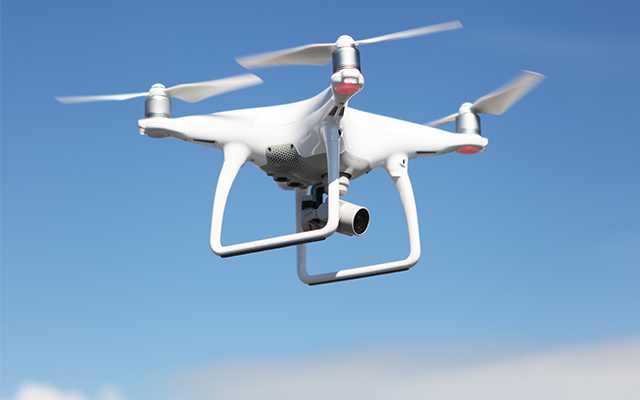War has always been a contest of power, speed, and strategy—but in the 21st century, a new player has entered the arena: artificial intelligence. AI is not a weapon in itself; it is a force that amplifies every other weapon, transforming the nature of conflict. From predicting enemy movements to guiding autonomous drones and safeguarding soldiers’ lives, AI has become the silent strategist behind modern defense systems.
It’s no exaggeration to say that AI is redefining warfare. Militaries across the world—from the United States to China, Russia, and beyond—are racing to harness machine intelligence not only to dominate the battlefield but also to prevent wars through smarter, faster decision-making. This evolution represents a turning point in human history, where data and algorithms can change the outcome of global conflicts.
Here are fifteen of the most incredible and groundbreaking ways AI is being used in military technology—each reshaping the art of defense and redefining what it means to fight, protect, and survive in the digital age.
1. Autonomous Drones and Unmanned Aerial Systems
AI-driven drones are transforming how wars are fought. Once used primarily for surveillance, drones are now capable of autonomous flight, target recognition, and even independent mission execution.
The most advanced systems, like the U.S. Air Force’s Loyal Wingman or Russia’s Okhotnik-B, use AI to make split-second decisions without constant human input. These drones can fly in formation with manned aircraft, providing cover or carrying out high-risk missions, effectively acting as robotic partners to pilots.
AI algorithms allow them to distinguish between civilian and hostile targets, navigate through GPS-denied environments, and adapt mid-mission based on real-time conditions. Their autonomy reduces human risk, while their precision minimizes collateral damage—a combination once thought impossible.
The future may see swarms of AI-controlled drones working together like flocks of intelligent birds, overwhelming enemy defenses through coordination that no human squadron could match.
2. AI-Powered Cyber Defense
In modern warfare, the first shots are fired not with bullets but with code. Cyberattacks can paralyze communication networks, disable satellites, or compromise entire defense systems. AI has become the ultimate guardian of digital warfare.
AI-driven cybersecurity platforms constantly monitor networks for anomalies—subtle changes in data flow, access patterns, or command signals—that could signal an attack. Unlike traditional defenses, which rely on known threats, AI can detect zero-day exploits and evolving malware by learning from patterns across millions of data points.
For example, the U.S. Department of Defense uses AI to defend sensitive infrastructure through adaptive algorithms that identify and neutralize cyber intrusions in seconds. Meanwhile, China and Israel are developing predictive AI systems capable of simulating potential cyberattacks before they happen, allowing defenses to be prepared in advance.
This invisible war—fought in milliseconds—is where AI shines brightest, turning defense into a self-learning, constantly evolving digital immune system.
3. Predictive Maintenance for Military Equipment
In the military, a single mechanical failure can mean the difference between victory and disaster. AI-powered predictive maintenance uses machine learning and sensor data to foresee equipment failures before they occur.
Every modern aircraft, tank, and naval vessel is now embedded with thousands of sensors. These sensors feed continuous streams of data—engine vibrations, fuel efficiency, temperature, wear, and stress levels—into AI systems that analyze patterns invisible to human eyes.
For instance, the U.S. Air Force employs AI-driven systems to predict when jet engines or radar components will need replacement. This reduces downtime, cuts maintenance costs, and ensures readiness even in the harshest environments.
By predicting the future health of machines, AI eliminates uncertainty from logistics and ensures that soldiers always have functioning, battle-ready equipment. It’s the military’s equivalent of a crystal ball—one powered by data and intelligence.
4. AI-Enhanced Surveillance and Reconnaissance
AI has given military surveillance an entirely new dimension. With satellites, drones, and ground sensors producing terabytes of data daily, human analysts can’t keep up. AI steps in as the ultimate observer, capable of processing and interpreting visual, audio, and thermal data at superhuman speeds.
Modern reconnaissance systems use AI to detect movements, identify vehicles, and even recognize patterns of activity that might indicate hidden threats. The U.S. National Geospatial-Intelligence Agency (NGA) uses machine learning to automatically flag suspicious changes in satellite images—like the construction of new missile silos or troop movements.
Facial recognition, motion tracking, and heat signature analysis powered by AI are transforming counterterrorism and intelligence operations. Instead of relying on slow, manual interpretation, militaries now receive instant situational awareness.
AI surveillance is not just about watching—it’s about understanding what is seen. And that understanding can save lives, both civilian and military, by enabling faster, more informed decisions.
5. Autonomous Ground Vehicles and Robotic Soldiers
Imagine an army that never tires, never hesitates, and never fears. AI-driven autonomous ground vehicles (AGVs) are bringing that vision closer to reality.
These robotic units can navigate complex terrains, detect mines, transport supplies, and even engage in combat with minimal human oversight. The U.S. Army’s Robotic Combat Vehicle (RCV) and Russia’s Uran-9 are prime examples of how robotics and AI combine to create smart, adaptable battlefield assets.
AI algorithms allow these robots to map their surroundings in real time, avoid obstacles, and identify targets. They can coordinate with human troops or operate in high-risk zones where sending soldiers would be deadly.
While the ethical debate about autonomous weaponry continues, their strategic value is undeniable. They extend human reach while minimizing loss—a profound shift in how wars are fought and survived.
6. AI in Command and Control Systems
Every modern battle involves overwhelming amounts of information—from radar feeds to troop locations, weather reports, and satellite images. Commanders can no longer manually process such complexity in real time. AI-based command and control systems have become the backbone of decision-making.
These systems act as cognitive assistants, analyzing all available data to suggest optimal strategies and predict outcomes. AI can simulate thousands of battle scenarios in seconds, helping commanders make faster, smarter choices.
Programs like DARPA’s Mosaic Warfare concept envision AI acting as a central brain that coordinates air, land, sea, space, and cyber forces seamlessly. It’s like having a strategist that never sleeps, constantly optimizing every move based on incoming information.
This intelligence doesn’t replace human judgment—it enhances it, giving leaders a wider field of vision and reducing the chaos of modern warfare into manageable insight.
7. Smart Missiles and Precision Targeting
AI has turned missiles from blunt instruments into intelligent hunters. Modern precision-guided munitions use AI for image recognition, trajectory optimization, and adaptive targeting.
Smart missiles can distinguish between decoys and real targets, adjust their path mid-flight, and minimize collateral damage by selecting the most efficient strike angle.
The U.S. Navy’s “Long Range Anti-Ship Missile” (LRASM) and Israel’s “Harpy” loitering munition are examples of AI-powered weaponry that can make decisions autonomously when communication is jammed.
These systems integrate data from multiple sensors—radar, infrared, optical—to adapt dynamically in combat. The result is faster, cleaner, and more accurate warfare, where every shot counts.
8. AI-Driven Simulations and Training
Before soldiers ever face combat, they now train in AI-powered virtual worlds. These simulations recreate realistic battlefields—complete with unpredictable enemy behavior, weather, and terrain—allowing troops to practice strategies safely and repeatedly.
AI creates dynamic, adaptive opponents that “learn” from players’ tactics, ensuring that no two sessions are alike. Systems like the U.S. Army’s Integrated Visual Augmentation System (IVAS) and the NATO-supported synthetic training environments merge augmented reality with AI-driven analysis to sharpen reflexes and decision-making.
In air combat, AI pilots trained on massive data sets can challenge human pilots in simulations that mirror real-world physics and strategy. The results? Faster learning, safer preparation, and soldiers better equipped to handle the chaos of real battle.
9. AI in Naval Warfare
At sea, where distances are vast and communication can be limited, AI provides a critical edge. Autonomous ships and underwater drones can patrol, detect submarines, and even defend fleets without direct human control.
The U.S. Navy’s Sea Hunter, an autonomous warship, can track enemy submarines for months without a crew. Its AI analyzes sonar data, predicts movement, and adjusts course automatically—all while maintaining strict safety protocols.
AI also enhances naval logistics, optimizing routes and fuel usage across entire fleets. With machine learning, naval commanders can predict maintenance needs, detect enemy patterns, and manage complex operations with unprecedented precision.
The ocean, once an unpredictable frontier, is becoming a domain of intelligent surveillance and strategy.
10. AI-Powered Space Defense
Space has become the ultimate high ground. With satellites controlling navigation, communication, and reconnaissance, protecting them is vital. AI is the key to space defense.
AI-driven systems track thousands of objects in orbit, predicting potential collisions or enemy interference. Programs like the U.S. Space Force’s Space Fence use AI to monitor debris and identify hostile activity in near-Earth orbit.
Beyond surveillance, AI helps optimize satellite constellations, ensuring uninterrupted communication even during attacks. Machine learning can also detect and counteract cyber intrusions into space-based networks—one of the newest threats in modern defense.
As the militarization of space grows, AI ensures that nations maintain not just control, but awareness—the most valuable asset in the silent expanse above Earth.
11. AI in Intelligence Analysis
The world generates more data every day than human analysts could process in a lifetime. AI has become the ultimate intelligence analyst, sorting through enormous volumes of text, images, and signals to extract meaningful insights.
Natural language processing (NLP) systems can scan intercepted communications in multiple languages, identifying key phrases or unusual activity. Image recognition algorithms analyze satellite photos for hidden infrastructure.
AI’s ability to connect seemingly unrelated data points allows intelligence agencies to uncover hidden networks of activity—smuggling routes, cyber cells, or troop mobilizations—that humans alone might miss.
This kind of intelligence doesn’t just win battles—it prevents them, identifying threats long before they escalate.
12. Human-Machine Teaming
The most revolutionary idea in modern defense is not replacing humans with AI, but teaming them together. In human-machine teaming, soldiers and AI systems operate as one cohesive unit.
Fighter pilots work alongside autonomous drones; commanders rely on AI assistants for tactical suggestions; soldiers wear AI-enhanced helmets that provide live data feeds and threat analysis.
This partnership amplifies human potential. Machines handle precision, speed, and data analysis; humans provide judgment, ethics, and creativity. Together, they form an unbeatable alliance of intuition and computation.
Human-machine teaming transforms warfare into a synchronized dance of human decision-making and robotic precision—a vision that’s already becoming reality.
13. AI for Strategic Forecasting and Decision-Making
In global strategy, predicting the future is everything. AI systems now simulate potential conflicts by analyzing political tensions, resource scarcity, and military movements across the world.
These predictive models, powered by deep learning, help governments assess risks and test “what-if” scenarios. They can forecast the likely outcomes of military interventions or detect the early signs of destabilization in certain regions.
For example, DARPA’s AI Next program works on “strategic reasoning systems” that mimic human analysts but think at machine speed. These systems allow policymakers to anticipate crises before they explode into conflict.
The ability to foresee—and potentially prevent—wars represents the most humane application of AI in military strategy.
14. AI in Electronic Warfare
Electronic warfare—disrupting, deceiving, or jamming enemy signals—is becoming smarter thanks to AI. Machine learning algorithms can detect and counteract interference in real time, identifying enemy radar signatures and adjusting frequencies to maintain communication.
AI-powered systems can also create “electronic camouflage,” feeding false data into enemy sensors to mislead them. Instead of brute-force jamming, AI uses precision deception, conserving power while maximizing confusion for adversaries.
As the electromagnetic spectrum becomes the new battlefield, AI ensures control over the invisible domain where information itself becomes a weapon.
15. AI for Medical Support and Battlefield Healthcare
Warfare inevitably brings injury and trauma, but AI is revolutionizing how soldiers are treated and saved. AI-powered medical systems can diagnose wounds, suggest treatments, and even perform robotic surgeries on the battlefield.
Autonomous medevac drones can locate injured soldiers and deliver first aid kits or evacuation robots. Machine learning models predict injury outcomes and recommend interventions in seconds, guiding medics with precision.
Wearable sensors feed real-time data—heart rate, blood pressure, oxygen levels—into AI systems that monitor soldiers’ health and alert command units in emergencies.
These technologies ensure that help arrives faster, decisions are smarter, and more lives are saved. In war, that makes AI not just a tool of strategy, but a guardian of humanity.
The Ethical Frontier
AI in military technology is powerful—but also dangerous if misused. The idea of autonomous weapons capable of making life-and-death decisions without human oversight raises profound ethical questions.
Global organizations and scientists advocate for frameworks that keep humans “in the loop,” ensuring accountability and moral responsibility. The balance between efficiency and ethics is delicate, but essential.
AI’s true potential lies not in replacing humans, but in protecting them—using intelligence to minimize harm, reduce casualties, and ultimately prevent wars through understanding and precision.
The Future of Warfare
The future battlefield will not be fought with brute force but with intelligent coordination. AI will link land, air, sea, cyber, and space operations into one seamless web of awareness and control. Soldiers will act with the power of instant knowledge; decisions will unfold faster than ever before.
But perhaps the greatest change will not be in how wars are fought—but in how they are avoided. With predictive systems, intelligent diplomacy tools, and real-time risk assessment, AI could make wars less likely by revealing the consequences before they begin.
In the end, artificial intelligence is not just reshaping military power—it is redefining the nature of human survival itself. When guided by wisdom, it becomes not a weapon of destruction, but a promise of defense, understanding, and peace through intelligence.






